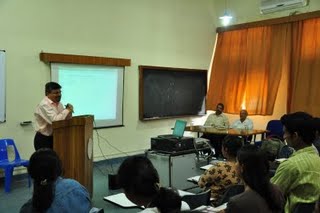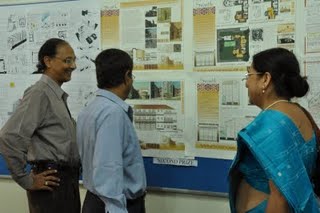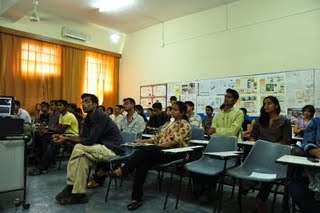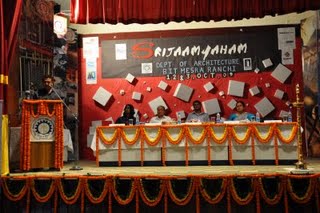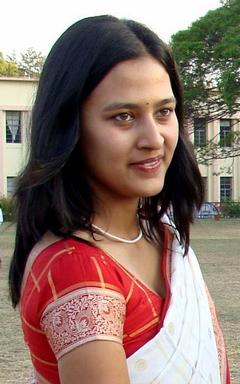Neelakshi Joshi Final ReportTranslating Traditions
Introduction The idea for the design competition “Translating Traditions" came from the comment made on my essay proposal by on of the jury members. He wanted me to explore 'HOW" and "WHY" traditional practices should be revived. Understanding traditions is not enough. Their translation into the current vocabulary is necessary. The idea was to document the various vernacular practices students see around them, understand their simple yet effective ways and ultimately come up with their own schemes on implementing them. The idea often comes up in conversations among students but the thought was to bring it out to debate in the zonal annual students' meet and see how different people feel about their heritage. Whether it encourages something more than mere nostalgia? Initial Preparations A blog (translatingtraditions.blogspot.com) was set up at the onset of the competition. It was also popularized by Ethos(www.ethosindia.in) a popular competition website and word was spread through student associations and social networking groups. The jury for the competition was-
We received 90 registrations from across India at the end of this period Traditions (June 15th-July 30th)
We received a total of 40 entries for the first round- from earthquake resistant housing in Srinagar to detailed study of Chettinad houses in south India. We were delighted to see the varied nature of buildings studied and the interest of students in their local ingenious styles of architecture. Acoustic treatment in old theaters was of special interest. Translation (August 5th -September 10th, 2009)
Sixteen studies from the first round one advanced to the next stage. Judges were impressed by the tangible solutions offered by students and also by use of local technology for addressing local issues of floods and earthquakes. Arpita Choudhury, Indian Institute of Technology,Roorkee. She proposed schemes to use bamboo in flood prone areas for immediate relief as has been done through centuries. Honey Jalali and Spondon Bhagowati , School of Planning & Architecture, New Delhi. Their study of traditional housing in Jammu-Kashmir culminated in a scheme for earthquake resistant housing in the same region. SPECIAL MENTION (USD 250) - Somraj Sarkar and Arnab Biswas, Bengal engineering and Science University, Shibpur. They studied Calcutta’s famous College Street and developed a proposal for revitalizing the area with the College Tank as a focus. Seminar A seminar was conducted in the seminar hall of B.I.T Mesra on 3rd October 2009 as a part of Zonasa’09. Three eminent people working with vernacular architecture and conservation were invited for the same.
1. Mr. Bulu Imam – Director, Sanskriti Kendra Research Center, Hazaribagh, Convener INTACH (Indian National Trust for Art and Culture) and campaigner against coal mining in Karanpura valley (www.karanpuracampaign.com). Dr. Khare shared his experiences as a young conservationist in Jaisalmer. He talked of pragmatism in conservation (‘we should not be conservative while conserving’) and why certain structures need to be retained for the knowledge they contain for future generations. Mr. S. D Singh presented his attempts of conserving the Rajmahal area with a group of students.
Audio-visual presentation made by winning students were played and discussed by the panel. It was widely agreed that that simple and passive techniques of yesterdays make more sense. The challenge to the modern day architect remains to make right choices over market driven sensibilities. Copies of the competition brief and prints of the lectures delivered were circulated among students. The Experience The entire experience of conducting the competition ‘Translating Traditions’ was very enriching. It was heartening to see the variety of structures studied. It put me in contact with a lot of students from across India as well as a number of architects and individuals who work towards upholding indigenous architecture. The aim of this entire exercise was to create awareness and inculcate pride in the future generation of architects about the wealth of indigenous knowledge that is slowly disappearing unsung and I feel it was met successfully. Additional Help and InformationAre you in need of assistance? Please email info@berkeleyprize.org. |
|

